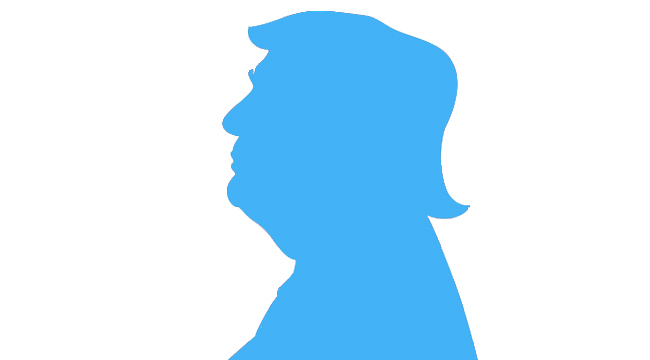
Twitter can be maddeningly opaque about who stays on the service, who gets booted for good, and why. Martin Shkreli and Tila Tequila have been thrown off the service, but others have been allowed back on, or kept, despite far worse behavior. And many of those misbehaving entities are governments or world leaders. It leaves many wondering: Just what does it take to throw a politician off Twitter? The answer may lie less with what the politician does, and what Twitter itself is capable of doing.
There’s the 800-thread-count pompadour in the room, of course, but while a certain sitting president may be the focus of Twitter concern lately, he’s far from the first public official or world leader to misbehave on Twitter. Diplomats have ridiculous arguments replete with Simpsons GIFs. Well before 2016 elections, Chuck Grassley was the most widely mocked politician on the platform, for his bizarre statements and occasional misbehavior. A UK MP who lost his seat publicly compared his opponent to syphilis. And this isn’t even taking into account how the service is flagrantly used for propaganda; North Korea tweets like anybody else. They act, in other words, much like the rest of us when we snap on Twitter, but these people have militaries at their command and fingers placed on buttons. Should Twitter users who can start wars be held to higher standards?
At the most basic level, in theory Twitter can boot anybody, from peon to president, any time it wants, as part of the site’s terms of service and overall community rules. Legally speaking, Twitter is a private platform, not a government one. There’s no human right to Twitter, specifically, and its terms of service aren’t laws or even written in stone. If Twitter decides, for any reason, to kick you to the digital curb, that’s the end of it and all anybody can do is rage at the gates for a while.
That said, the site’s rules are, at best, poorly enforced. It’s not hard to find a politician who’s managed to fall afoul of at least one of those rules. So why isn’t Twitter applying the boot?
You might think it boils down to money, and that childish politicians sell ads. After all, we’re interested in politicians and surely, if nothing else, the fact that the President of the United States, the most visible politician in the world, offers his unfiltered thoughts on Twitter would bolster the service’s financial profile and user base. But it hasn’t. Twitter had a terrible fourth quarter in 2016 and 2017 has, if anything, been worse, with essentially zero account growth. So what’s Twitter getting out of this?
The answer might well be “nothing.” The real problem might be, at root, Twitter’s notorious inability to keep the site from becoming toxic. Just this week, artist Shahak Shapira, sick of Twitter’s refusal to delete racist, harassing tweets, turned them into stencils and chalked them into the sidewalk in front of Twitter’s German offices. The site has been criticized, repeatedly, for banning the victim of abuse instead of the abuser. Twitter’s rules, in practice, seem little more than vague suggestions that not even its own abuse team follows.
Twitter’s one real rule is apparently that you can’t publicly embarrass the brand. Milo Yiannopolous’ behavior towards Leslie Jones was far from the first horrible thing he’d done on Twitter, but that didn’t draw nationwide contempt. Tila Tequila made her interest in Nazism well known before that salute, but it was widespread media coverage of her performing a Nazi salute in a photo that got her banned. The message Twitter seems to send, more often than not, is that it doesn’t really care how people use Twitter, unless enough people notice to shame the company into doing something. Most politicians don’t meet that standard, no matter how distasteful their behavior gets.
Why, exactly, Twitter is either unwilling or unable to stop the flood of harassment is unclear. It may be a matter of corporate culture; Twitter is far from the only internet platform that insists it’s not their fault their users have become an unruly mob. Some have accused Twitter’s executive suite of supporting the views and actions of various political groups. But the end result is clear; Twitter is either unable or unwilling to effectively deal with its users’ misbehavior.
That may be the problem in the end: Twitter is likely fully aware that certain politicians need to be chastened, or even removed from the service. But, whether due to internal dysfunctional, tacit approval, or sheer ineffectiveness, the site can’t police its users, no matter who they are and seemingly no matter what they do. The only thing Twitter users can do is take note of what these politicians are showing us of themselves, and remember it down the line.
